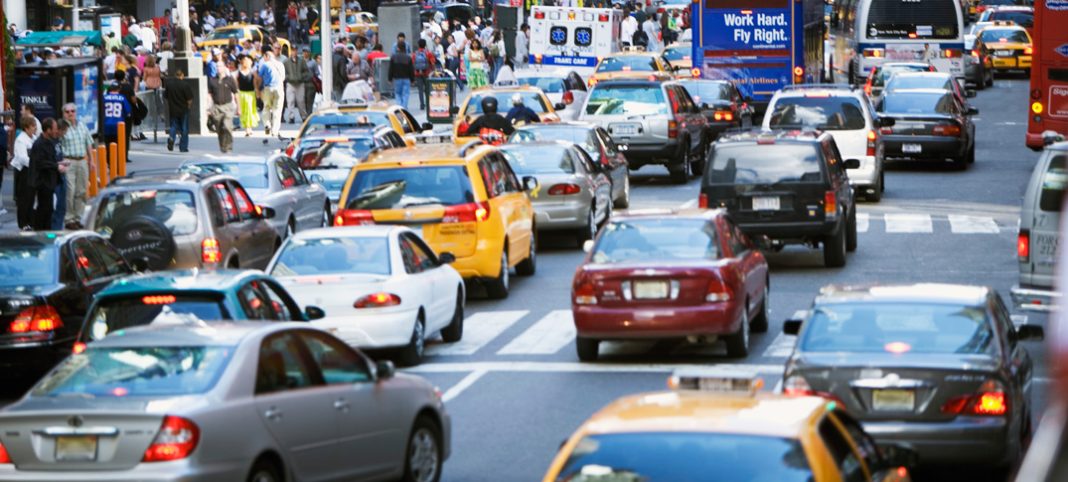- A new U.S. survey has revealed the cost of commuting in different cities
- Majority of consumers say their commuting costs have increased
- 67% see commute as ‘me time’
- The worst type of commuter is revealed as ‘germ spreader’
Do you ever think about how much it costs to get to work? A new survey has revealed the price paid in cities across the U.S – and has also highlighted some other interesting theories on commuting.
Workers across the nation travel 45 minutes on average and spend approximately $10 per day – approximately $2,600 and 200 hours annually – according to the new survey commissioned by the Citi ThankYou® Premier card.
The majority of U.S. consumers (60%) nationally said their commuting costs have increased over the last five years, while most (79%) indicate gas is their largest cost.
“For the millions of people who commute on a daily basis, the unavoidable costs can have a major impact on household budgets,” said Chris Fred, Head of Proprietary Product Management at Citi Cards.
The survey found that commuting trends vary among major U.S. cities. The national average cost of a daily roundtrip commute is $12. Los Angeles had the highest daily roundtrip cost ($16), and Chicago and San Francisco were the lowest ($11).
New Yorkers have the longest commute, with an average commute time of 73 minutes and 44% commuting over an hour. In comparison, commute length averaged roughly an hour in Chicago (64 minutes), San Francisco (56 minutes) and Los Angeles (55 minutes). Miami had the shortest commute among cities polled with an average commute time of 49 minutes.
The Citi ThankYou Premier Commuter Index also revealed the following trends:
- Commuters Prefer Driving: Commuters are primarily using their own car (77%), followed by the bus (21%), subway (9%) and train (8%).
- Gas is Overwhelmingly the Highest Commuting Cost: The majority of commuters (79%) spend most of their commuting money on gas, followed by public transportation (14%) and tolls (3%).
- Making the Most of Commute Time: 76% of those who are employed full-time see their commute as a time to relax, while 24% see it as a time to be productive. One in three commuters nationally conducts conference calls while in transit. New Yorkers (52%) were twice as likely as the national average (26%) to email. Commuters in Chicago (37%) were three times more likely than the national average (12%) to prepare for meetings. And, Los Angeles commuters make the most of their commute time by doing errands (37%, compared to national average of 23%).
- Relaxing in Transit to and from Work: The majority of commuters listen to music (85%) and one in four (27%) are calling friends and family. How commuters relax varies by city – New Yorkers are most likely to read a book or magazine (39%). Social media use was popular among New York (29%), Chicago (26%) and San Francisco (20%) commuters. Miami residents are most likely to call family or friends (40%). San Francisco commuters are less likely to chat with other commuters (8%) compared toNew York and San Francisco (16%).
- Commute Time is Used as ‘Me’ Time: 67% of commuters – including 72% of women – consider transit time to be the only ‘me time’ they get during the day.
- A More Pleasant Commute: Even though many commuters relax while in transit, the majority (88%) are looking for their commute to be more pleasant by enjoying their favorite music (64%), having their favorite drink or snack (40%), taking a different, more scenic route (33%) and traveling with friends (30%).
- Open to Trying Bike Shares if Available: Nearly half of consumers (49%) who don’t currently commute by bike would use a bike share if it were available in the area. Commuters in Chicago (60%) and Los Angeles (59%) would most likely use a bike service if it were available in their area.
- Germ-Spreading is Biggest Pet Peeve: The worst type of commuter was identified as the ‘germ spreader’ who is sick or doing something unseemly, followed by ‘The Talker’. To deal with these passengers, a majority have tried switching seats (65%) or distracting themselves with music or a phone conversation (50%).



















